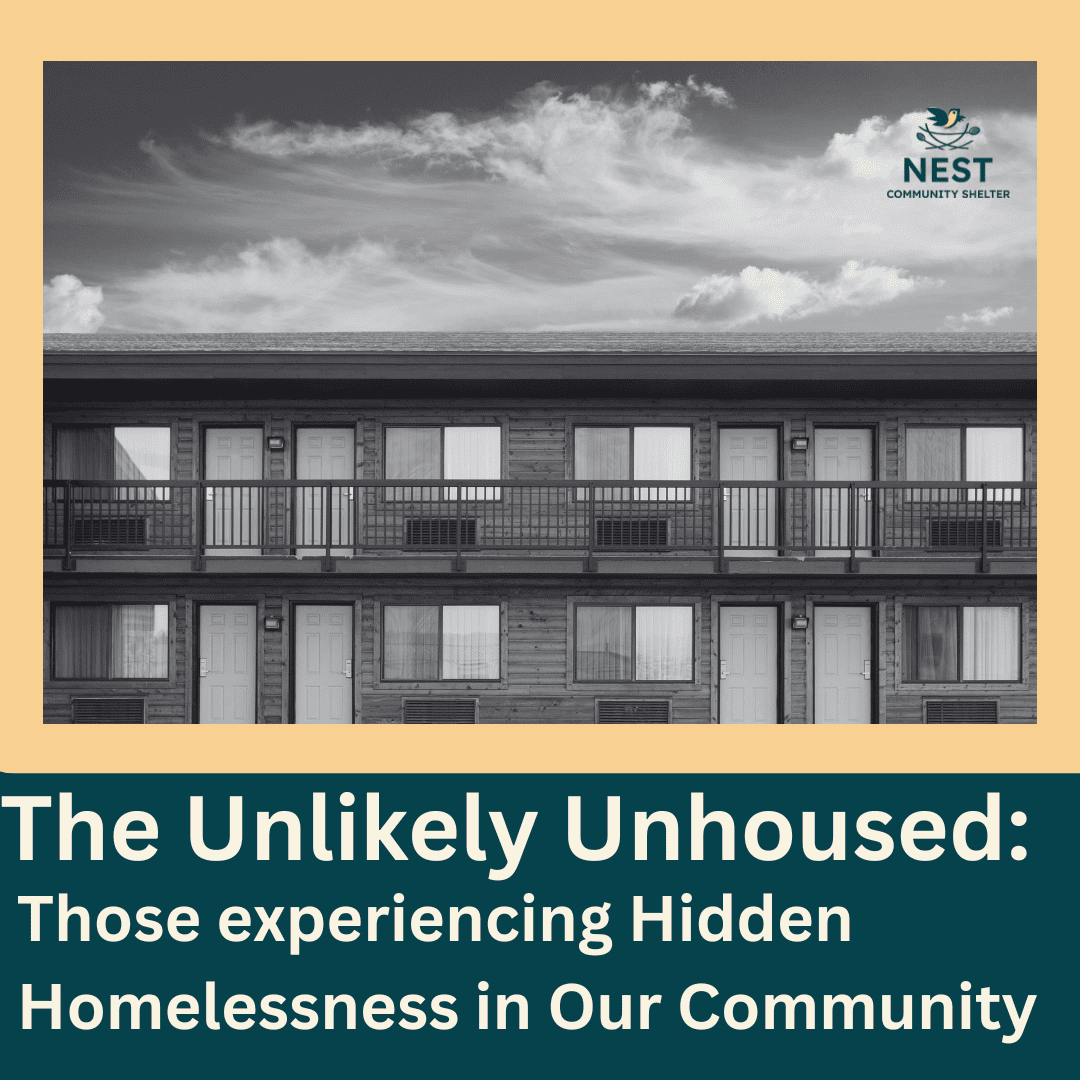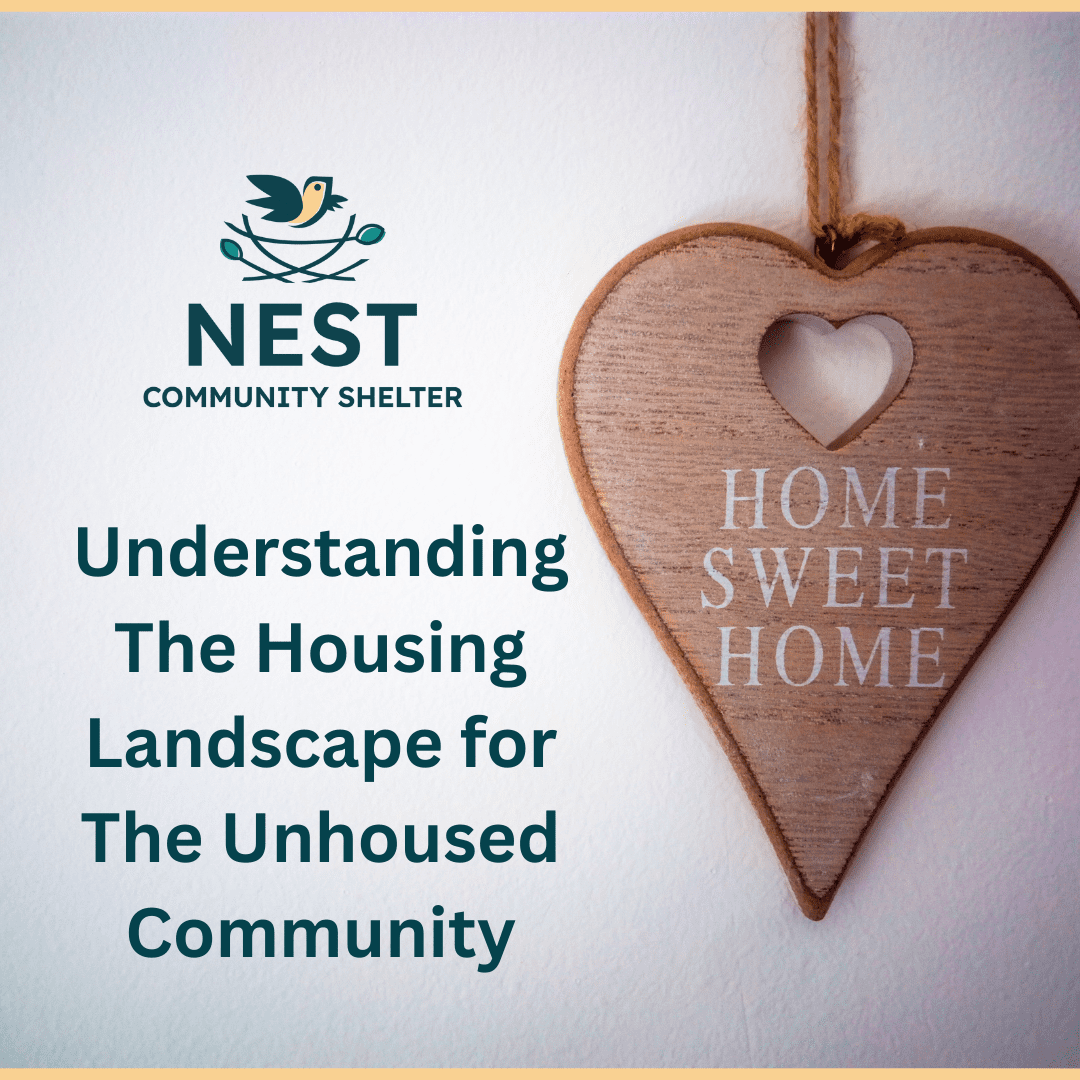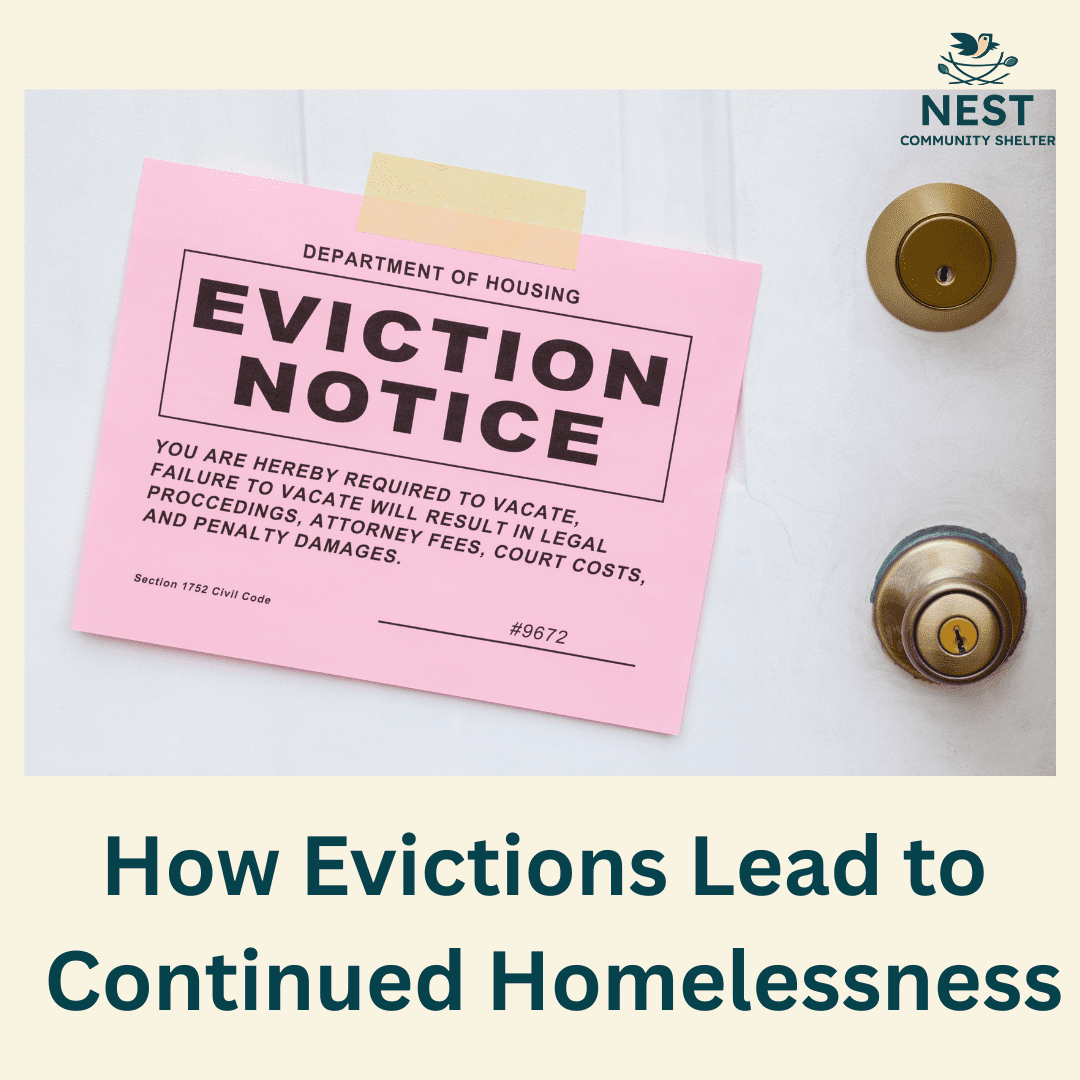
As we continue our series on the unlikely unhoused, today we want to discuss a truly unseen segment of the unhoused community, those experiencing hidden homelessness. This is happening right here in our community, affecting our neighbors, coworkers, and even children in our local schools. While this population is technically housed, their living situation is often precarious, unstable, and sometimes dangerous.
What Is Hidden Homelessness?
Hidden homelessness refers to individuals who temporarily stay with friends or family without a permanent home of their own. These individuals may appear to be housed but lack stable housing. Hidden homelessness can look like motel living, couch surfing, living in one’s vehicle, etc. For many, they don’t access services for unhoused individuals because they’re technically housed but not in a stable or safe living environment, so they remain hidden from national statistics.
Research shows that an estimated 3.7 million people in the United States were doubled-up in 2019. Doubling-up is when more than one family shares a house to split the costs. This often results in substandard living conditions and overcrowding. This stands in stark contrast to the roughly 580,000 people counted as homeless on a single night by the U.S. Department of Housing and Urban Development, revealing just how vast this hidden crisis truly is. While some might say that for individuals who are doubling up, at least they have a place to stay, but ask yourself, is this a housing situation you’d want to live in, raise a family in? More often than not, this situation is created out of desperation, not choice; it is a last-ditch attempt to keep a roof overhead.
How Does Hidden Homelessness Happen?
Many experiencing hidden homelessness are younger people who have experienced a sudden, catastrophic life change, trauma, or challenges such as job loss, divorce, domestic abuse, a medical condition, or mental illness. The most common reason people give for losing their accommodation is a relationship breakdown. At the same time, other personal issues can include childhood trauma, mental illness, physical health challenges, a substance abuse disorder, or bereavement.
In Indiana, we’re seeing these numbers rise across the state. According to the 2024 Point-in-Time count data, 4,854 people were experiencing homelessness in Indiana. However, this number only captures those visible in shelters or on the streets. According to a recent article in the Indy Star, they stated that Indiana public schools reported an estimated 44% increase in homeless students from the 2020-21 to the 2023-24 school years, and nearly 80% of students experiencing homelessness are “doubled up,” meaning they share housing with others due to economic hardship.
The Hidden Toll: Emotional and Physical Impact
The experience of hidden homelessness often has a devastating impact on those enduring it. Depression and suicidal thoughts are much more common among homeless individuals than their housed counterparts, along with symptoms of trauma and substance abuse. The psychological effects include chronic stress, exposure to violence, and disruption of basic daily activities like sleep and self-care, which further worsen mental health challenges.
For children and young people, the impact is particularly severe. Homeless children appear to suffer greater emotional and developmental problems, including severe delays in language skills, gross motor skills, fine motor coordination, and developmental milestones. These children are more likely to experience hunger, which has serious adverse effects on their physical, emotional, and cognitive development. We also know that children who experience homelessness are more likely to experience homelessness as adults.
Stress, uncertainty, and threats to safety while experiencing homelessness increase risk for mental illnesses such as anxiety, depression, and post-traumatic stress disorder. The physical health consequences are equally severe, with people experiencing homelessness facing increased risk for illness, diabetes, and heart and lung disease.
How to Recognize the Signs
Because hidden homelessness is invisible by nature, learning to recognize the warning signs is crucial. People experiencing hidden homelessness may exhibit behaviors such as wearing the same clothes repeatedly, having poor hygiene, appearing disorganized, or missing essential records like immunization documents. However, this is by no means a sure sign of hidden homelessness.
Common signs include frequent moves, enrollment at multiple schools, gaps in learning, poor or inconsistent attendance, unmet medical or dental needs, fatigue, social and behavioral challenges such as extreme shyness or withdrawal, and difficulty with peer or adult relationships. You might also hear explanations like “We’re staying with relatives until we get settled” or “We’ve been moving around a lot”.
How You Can Help
If you suspect someone you know is experiencing hidden homelessness, there are compassionate ways to offer support.
Here are practical ways our community can help:
- Connect them to resources: Share information about resources in our community. If you’re not sure where to start, feel free to contact us. We can connect individuals to resources in the community.
- Volunteer your time: Nest Community Shelter is a volunteer-based organization that relies on volunteers to operate.
- Donate essentials: Canned goods, coffee, sugar, coffee creamer, paper plates, napkins, plastic cutlery, and cleaning products all help us serve our unhoused population. Hygiene products and monetary donations help us meet the immediate needs of those we serve as well.
- Advocate for affordable housing: Statewide data from across Indiana shows that 47.5% of all renters in our state are housing cost burdened, meaning they spend more than the recommended 30% of their income on housing, and 26.3% of all Hoosier renters are severely housing cost burdened. Simply put, most Hoosiers are having difficulties, or extreme difficulties, affording housing in our state.
- Support with understanding: Experiencing hidden homelessness entails a living situation that is both physically and emotionally precarious, with individuals feeling a loss of control and feelings of imposition. A non-judgmental, supportive approach makes all the difference.
Moving Forward Together
It’s important to remember that Point-in-Time counts do not include those who are housing-unstable, who might be couch surfing, doubled up, or living in a motel. The actual scope of homelessness in our Indiana communities extends far beyond what we can see on the streets. This presents challenges because, without this population being counted, funds to support them are not assigned from the Point-in-Time Count.
At Nest, we believe that everyone deserves a safe, stable place to call home. Hidden homelessness may be invisible, but its impact on individuals, families, and our community is very real. By learning to recognize the signs, offering compassionate support, and advocating for systemic change, we can work together to ensure that no one in our community has to face housing instability alone.
If you or someone you know needs assistance, please reach out. We’re here to help, and you don’t have to face this alone. Also if you’d like to learn more about this topic you can do so through the following blog posts:



